Residence Museum > King’s Building – Apartments of the king and queen
Main information:
Residence Museum
King’s Building – Apartments of the king and queen (Rooms 72-127)
Royal Anteroom / Maximilian II’s Sanctuary (Room 14a)
Theme room: Max I Joseph (1756–1825): Royal Era – Era of Change (Room 100)
Immediately after he took power in 1825, King Ludwig I embarked on a large-scale expansion of the Residence. In 1826 the architect Leo von Klenze started work on the King’s Building, a new residential palace in the south part of the Residence complex. Ludwig's love of Italy and the Renaissance determined the style of the extension, especially the façade on Max-Joseph-Platz, which Klenze designed using elements derived from the Palazzo Pitti and the Palazzo Rucellai in Florence. The new building was completed in 1835.
The adjacent apartments of the royal couple are on the main floor. What was new was that the royal chambers were "in full view of the people". Even during of Ludwig I’s reign, the rooms could be visited during the monarch’s absence!
The subjects of the numerous pictures decorating the apartments were also decided by Ludwig. His own apartment features themes from ancient Greek poetry, while the walls of the queen’s rooms are hung with scenes from the main works of great German authors.
Every detail of the royal apartments, including the walls and the furniture, was designed in a uniform style by the architect of the King’s Building, Leo von Klenze, the leading exponent of Neoclassicism in Munich. All the furniture was made by Munich cabinetmakers and sculptors in 1834-35.
The King’s Building was severely damaged in 1944, but by 1980 the rooms had been refurnished as they were in the year the building was completed on the basis of an inventory dating from 1835. Munich thus regained a unique ensemble of rooms in the late Neoclassical style.
Royal Anteroom / Maximilian II’s Sanctuary (Room 14a)
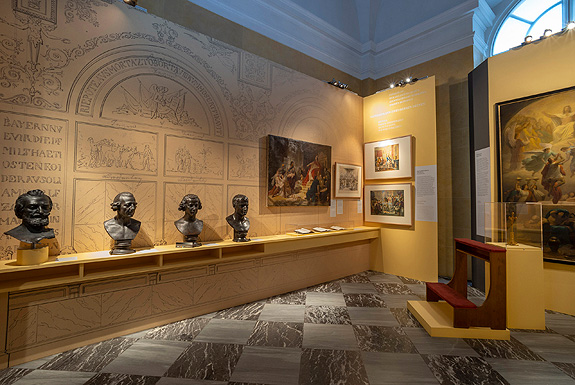
In the former anteroom of the king’s apartment a special exhibition has been created focusing on the son and successor of Ludwig I, King Maximilian II (r. 1848-1864), and the ‘sanctuary’ that he installed in 1850 close to the second floor of the King’s Building, which was destroyed in the Second World War.
This meticulously furnished ‘Holy of Holies’ that few people knew about was used by Maximilian II as a place of contemplation and soul-searching. For this purpose the monarch with a strong sense of history surrounded himself with historical pictures of deeds by exemplary rulers and busts of model statesmen and philosophers.
The lost sanctuary is brought to life for visitors with around 25 objects, including busts, sketches and designs for the original picture programme as well as other graphical and sculptural works of the epoch.
Theme room: Max I Joseph (1756–1825): Royal Era – Era of Change (Room 100)
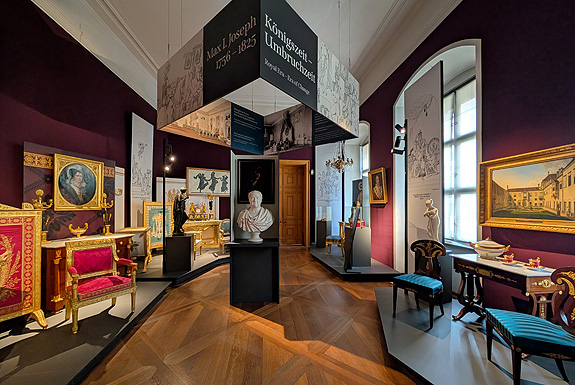
On the site of the former State Council Chambers of the first Bavarian king, Max I Joseph (destroyed in 1944), an exhibition area that opened in 2025 commemorates the first decades of the constitutional monarchy in Bavaria: a period marked by profound political, mental and social changes that continue to shape life in the present Free State to this day.
Visitors can learn more about this eventful era through the biographies of the first King Max I Joseph (r. 1799-1825), who descended from the Zweibrücken branch of the Wittelsbach dynasty, and his family, as well as through the furniture, objects of state representation and works of art with which they surrounded themselves in the Munich Residence.
Around 50 artworks and furnishings from the royal family's former living quarters, which had long been in storage, provide insights into the public and private aspects of rule at the beginning of the 19th century.

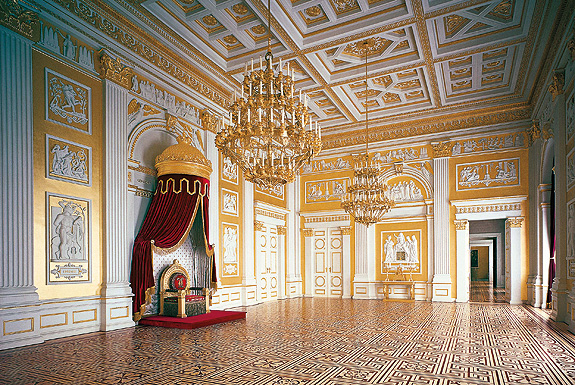
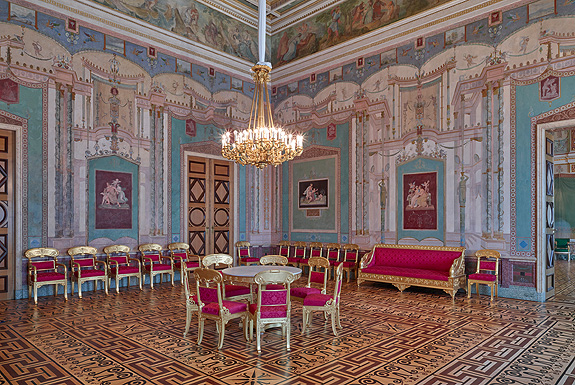
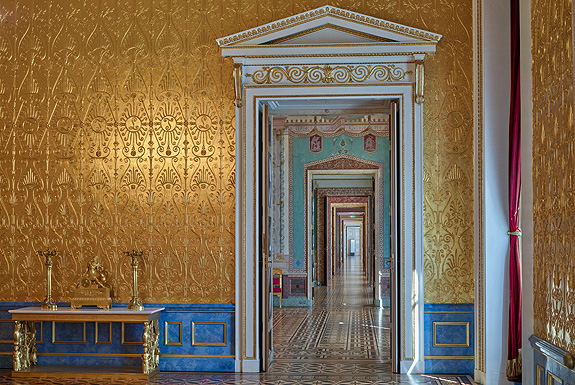
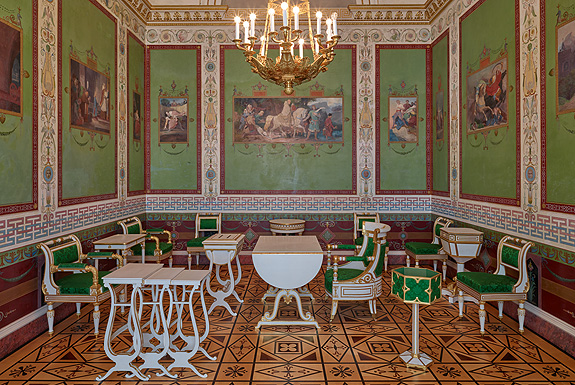
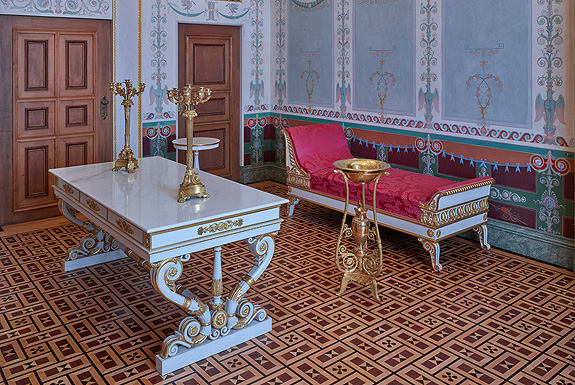
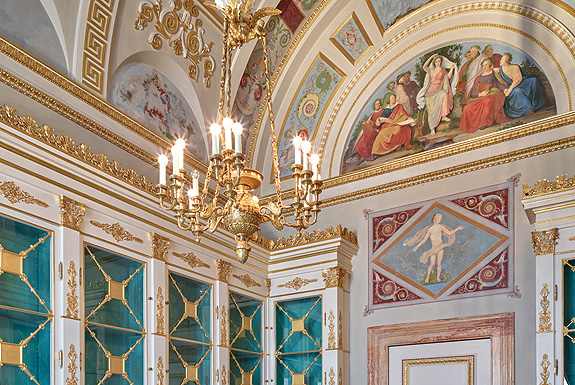
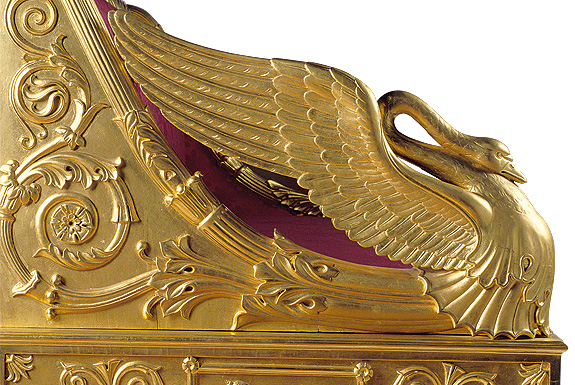
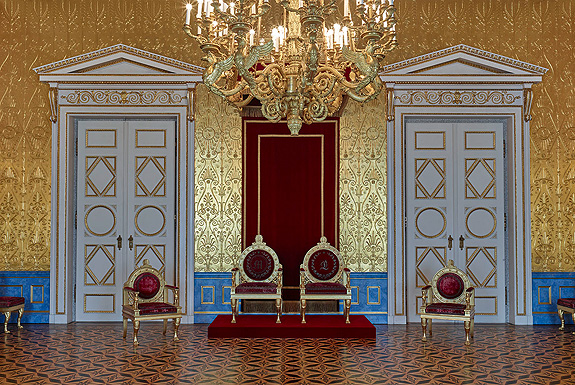
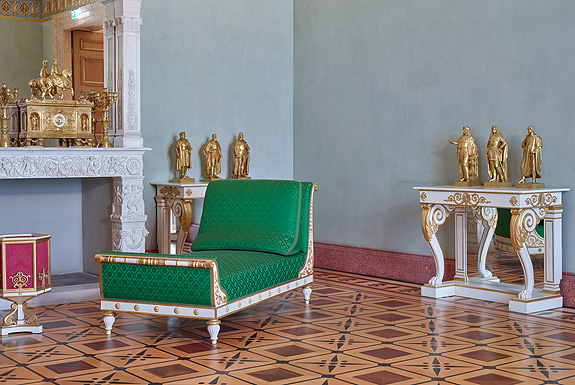
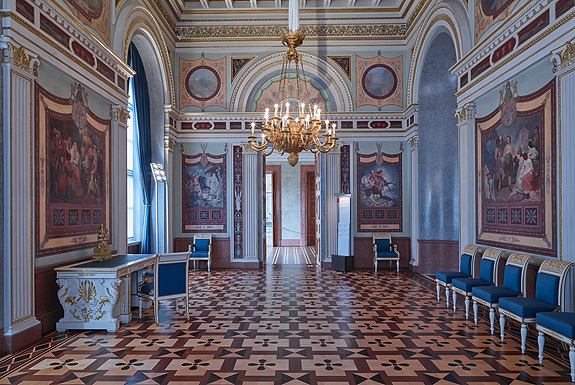
Facebook Instagram YouTube